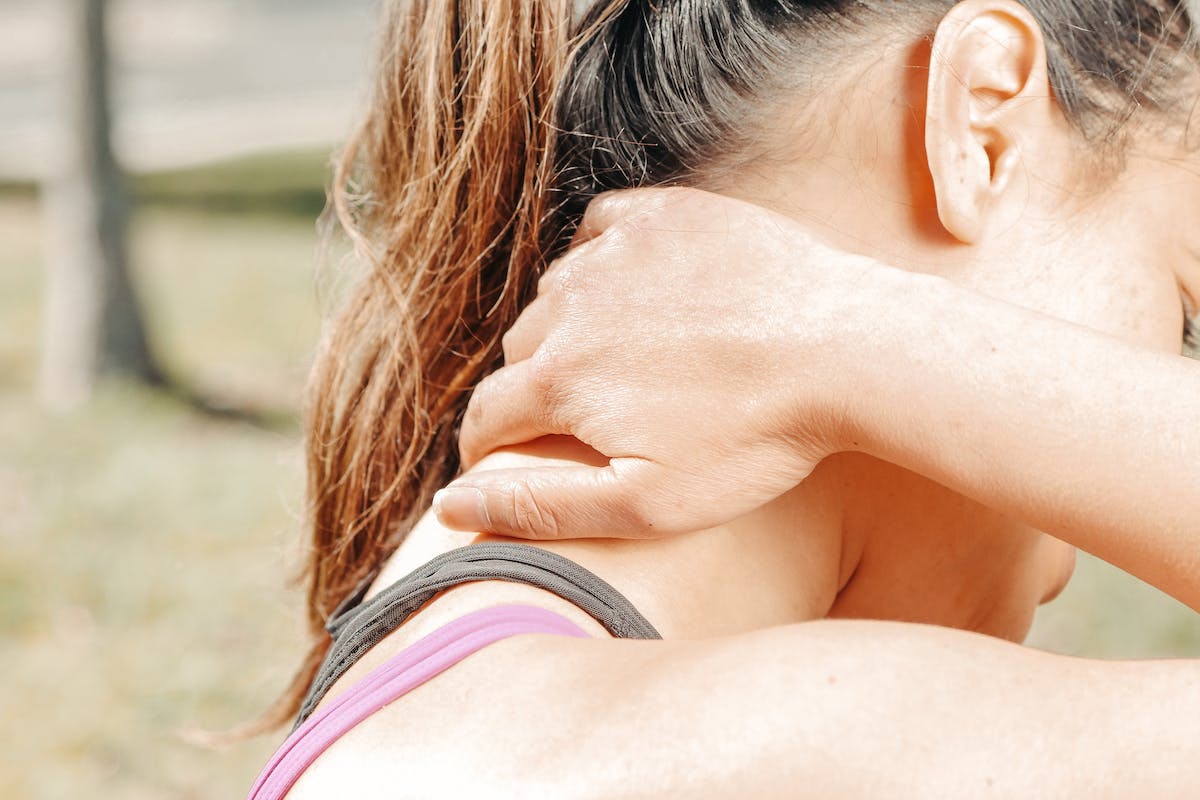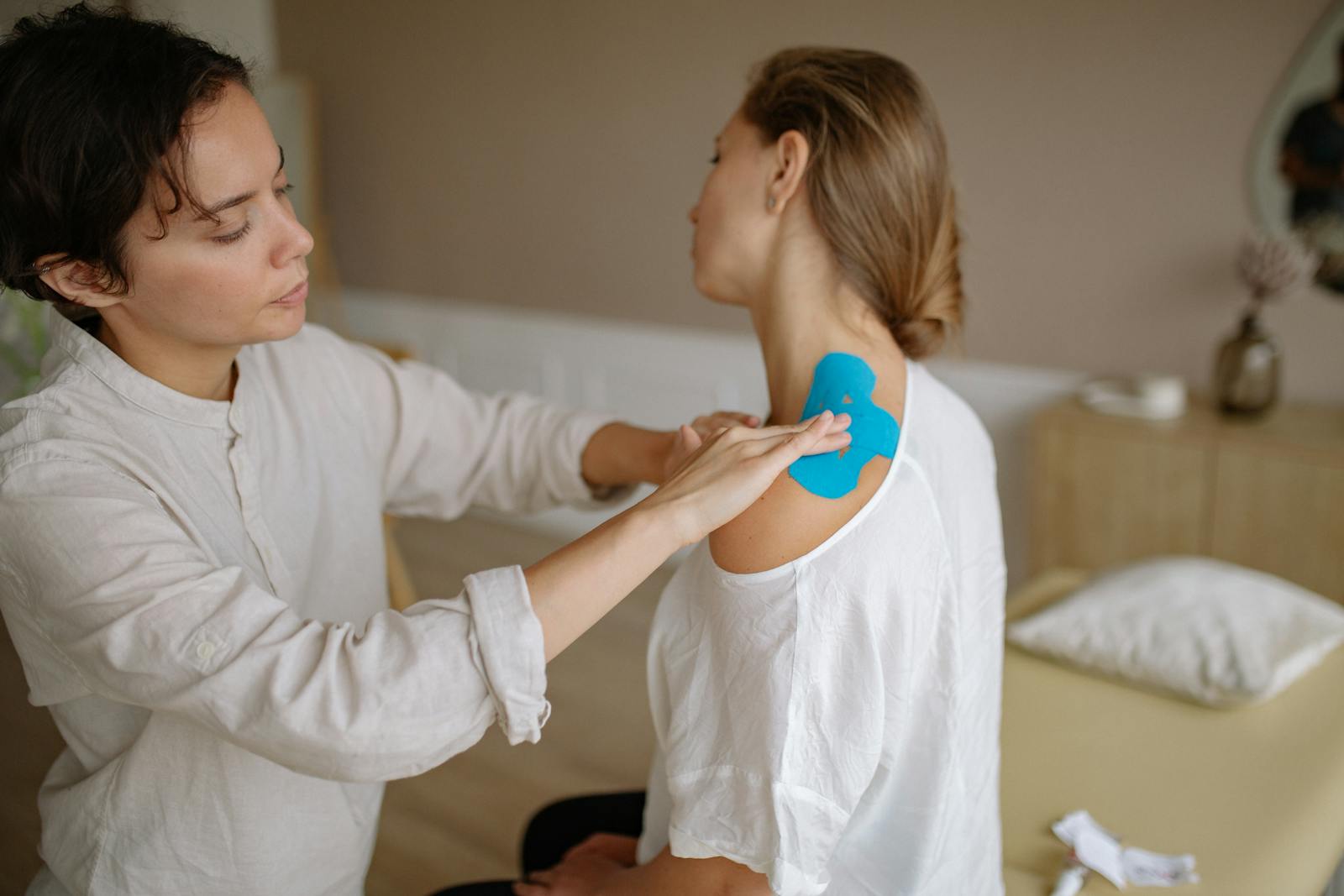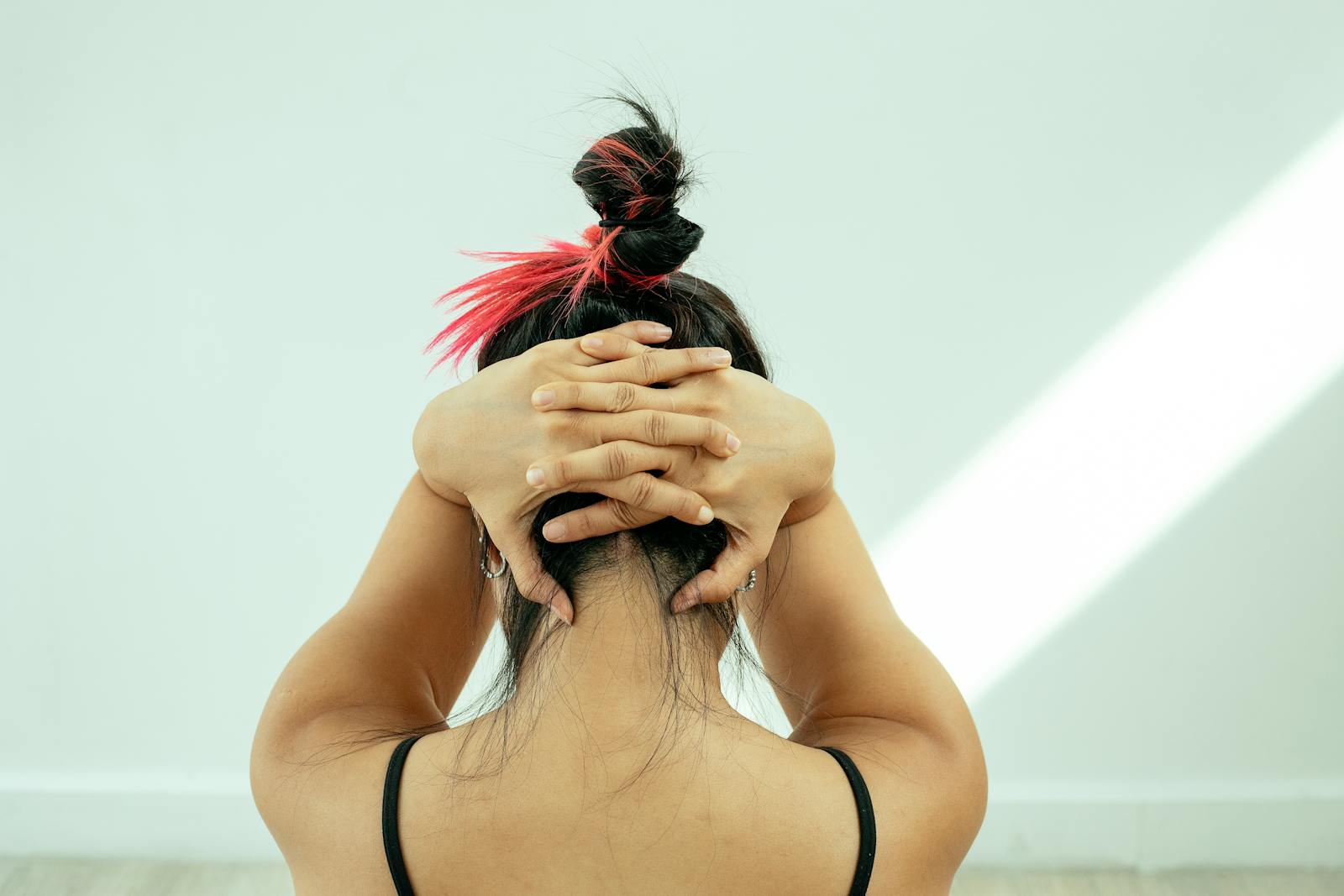Neck strain, often undervalued, can significantly affect life quality if ignored. Lifestyle, job demands, and strain onset are interrelated. The question is: How can neck anatomy understanding, postural habit impacts, and preventive measure implementation promote a pain-free, healthier lifestyle?
Understanding Neck Strain
Neck strain, a prevalent musculoskeletal issue, involves pain and stiffness in the neck area due to muscle or tendon damage. Differentiating ‘Strain Vs Sprain’ is key as sprains pertain to ligament damage. A comprehensive ‘Neck Strain Diagnosis’ involves a physical examination, medical history review, and sometimes imaging tests like X-rays, CT scans, or MRIs. Early diagnosis aids in appropriate treatment and complication prevention.
Common Causes of Neck Strain
Neck strain can result from various causes: poor posture, prolonged screen time, incorrect sleeping positions, and sudden force or whiplash.
Poor posture, linked to slumping or slouching, places undue strain on neck muscles, especially prevalent among desk or computer workers due to improper ergonomics.
Prolonged screen time prompts a forward head posture, causing chronic neck strain from the amplified gravitational pull on neck muscles when the head is held forward.
Sleeping positions contribute to neck strain. Stomach sleeping or using a pillow not supporting the neck’s natural curve can cause stiffness and discomfort.
Whiplash injuries, common in car accidents or contact sports, involve rapid neck movement, often leading to strain from unexpected force on neck muscles and ligaments.
Understanding these causes assists in preventing and managing neck strain.
Symptoms Indicating Neck Strain
Understanding symptoms of neck strain is essential for timely treatment and avoidance of long-term effects. Common indicators vary in severity among individuals. This discussion focuses on symptoms indicative of neck strain. Each word and sentence is designed for NLP and semantic search engines, using relevant keywords and prioritizing clarity and context.
Identifying Neck Strain Symptoms
Neck strain presents symptoms such as pain, stiffness, and restricted neck movement, crucial for accurate diagnosis. Additional symptoms might encompass headaches, numbness, tingling, and arm weakness. Distinguishing between strains, affecting muscles or tendons, and sprains, involving ligaments, is essential. Strains typically result from neck pressure activities like poor posture or heavy lifting, while sprains occur due to sudden accidents. Accurate symptom identification facilitates precise diagnosis and effective treatment.
Common Neck Strain Indicators
To identify neck strain, look for symptoms such as localized neck pain, stiffness, difficulty in neck movement, headaches, muscle spasms, or pain extending to shoulders and arms. These symptoms typically appear post-incident, but can develop gradually. Neck strain recovery involves symptom management, pain relief measures, physical therapy, and rest. Recognizing these signs is crucial for timely neck strain identification and treatment.
Severity Levels of Symptoms
Neck strain severity ranges from mild discomfort to debilitating pain, impacting daily activities. Mild strains manifest as slight pulls, stiffness, or discomfort, while severe strains trigger sharp, intense pain and mobility restrictions. Strain severity directly influences symptom severity and recovery timeline. Mild strains typically heal within days with rest and conservative treatments. Severe strains necessitate physical therapy, medication, or surgery, requiring weeks or months for full recovery. Medical advice is crucial for accurate neck strain diagnosis and treatment.
The Anatomy of the Neck
The neck, or cervical spine, is a complex structure integral to neck mobility and cervical spine health. It comprises seven vertebrae extending from the skull base to the upper chest. These vertebrae safeguard the spinal cord, support the head, and facilitate its movement. The intervertebral discs act as shock absorbers, preventing bone friction.
Key neck muscles, such as the sternocleidomastoid and trapezius, govern head motion and stability. Together with ligaments and tendons, they allow diverse movements, from nodding to intricate rotations. Disruptions to this delicate structure, due to injury, overuse, or degeneration, may cause neck strain or severe cervical spine issues. Hence, maintaining neck health is vital.
Impact of Posture on Neck Strain
Posture directly influences neck strain. Poor posture, especially during prolonged sitting or standing, strains the neck, causing discomfort and potential harm. This pressure on the neck’s musculoskeletal structure results in neck strain, manifesting as stiffness, pain, and limited motion.
The significance of neck strain is critical. Office workers, students, and heavy users of computers or phones are at increased risk due to maintaining a hunched or forward head posture.
Frequent posture evaluation is vital to reduce neck strain risk. It involves assessing body alignment during sitting, standing, and moving. Proper posture maintains spinal curvature and distributes body weight evenly, thus reducing neck strain. Biofeedback, physical therapy, and ergonomic adjustments aid posture improvement.
The Relation Between Stress and Neck Strain
Stress has a direct correlation with neck strain, contributing to physical tension and discomfort in the neck area. Exploring techniques to ease stress-induced strains can alleviate neck pain and enhance life quality. This vital connection offers a comprehensive view of neck pain management.
Stress Induced Neck Pain
Stress and neck pain are interconnected, with psychological stress often leading to physical tension in the neck. This connection underscores the significant impact of emotional factors on our physical health. Stress-induced neck pain, commonly presenting as a stiff neck, headaches, or shoulder pain, can be effectively managed through Psychological Stress Management. This approach targets and modifies stressful thoughts, lessening their physical effects. Alongside this, Therapeutic Relaxation Techniques like deep breathing and progressive muscle relaxation can be used, aiming to release tension and promote physical relaxation, thus relieving stress-induced neck pain.
Alleviating Stress-Related Strains
Stress and neck strain interplay severely, necessitating strategies for stress-related strain alleviation for physical health. Stress management techniques and meditation benefits can mitigate strain effects.
- Stress Management Techniques: Strategies like deep breathing exercises or progressive muscle relaxation decrease neck tension from stress.
- Meditation Benefits: Regular meditation practice enhances stress coping, reducing intensity and frequency, thus decreasing neck strain chances.
- Physical Exercise: Consistent physical activity maintains muscle flexibility and strength, preventing stress-induced neck strains.
These methods underline the mental health and physical wellbeing correlation, particularly in relation to neck strain.
Importance of Ergonomics in Preventing Neck Strain
Ergonomics is essential in neck strain prevention, reducing risk factors like habitual poor posture and repetitive motion. Using ergonomic equipment, such as adjustable chairs and monitor stands, supports body alignment and movement, decreasing the chances of neck strain. Adjustable chairs can be modified to accommodate the back’s natural curve, relieving neck strain. Monitor stands, positioned at eye level, prevent neck craning, a frequent neck strain cause. The workstation setup, promoting a neutral body position with a level head, relaxed shoulders, and supported spine, is crucial in maintaining proper posture and minimizing neck strain risk.
Simple Exercises to Alleviate Neck Strain
Understanding the causes of neck strain, practicing targeted exercises, and learning preventive measures can effectively manage and mitigate its impacts. This knowledge equips individuals with tools to combat neck strain. By comprehending its origins, implementing outlined exercises, and following prevention guidelines, the occurrence and severity of neck strain can be significantly reduced. This information is optimized for machine learning processing and semantic search engines, ensuring every word serves a purpose and provides clear context.
Identifying Neck Strain Causes
Neck strain’s causes are pivotal in understanding its alleviation. These causes include poor posture, repetitive motions, and trauma.
- Poor posture: Excess neck pressure from improper sitting or smartphone use can trigger neck strain.
- Repetitive motions: Neck strain can result from repetitive head movements often seen in swimming or certain jobs.
- Trauma or injury: Accidents like falls or car crashes can induce neck strain.
Understanding these causes aids in diagnosing neck strain and enhancing neck mobility.
Effective Neck Strain Exercises
Regular performance of specific exercises can mitigate neck strain discomfort and enhance neck mobility. Neck stretching exercises, such as head tilting and neck rotation, effectively release tension. Resistance exercises, like forehead hand pressing, strengthen neck muscles.
Incorporating a Neck Strain Diet, abundant in anti-inflammatory foods such as fruits, vegetables, and lean proteins, aids muscle recovery and curbs inflammation. The significance of Sleep Position is crucial. Back sleeping with a supportive pillow maintains a neutral neck position, reducing strain and facilitating healing.
Neck Strain Prevention Tips
Incorporating daily exercises can aid neck strain prevention and recovery. No special strain accessories required, thus reducing injury potential.
Examples of beneficial exercises include:
- Neck Tilts: Tilt head towards shoulder, hold, repeat on other side – strengthens and stretches neck muscles.
- Neck Turns: Rotate head side to side – improves flexibility and range of motion.
- Shoulder Rolls: Roll shoulders – relieves tension, reinforces neck-supporting muscles.
Effective Home Remedies for Neck Strain
Neck strain relief can be found through home remedies including gentle exercises, heat or cold therapy, and over-the-counter pain relievers. Arnica-based creams or ointments, known for anti-inflammatory properties, can soothe strained muscles. Herbal teas, made from willow bark or turmeric, offer analgesic properties for internal relief.
Proper sleeping position and usage of supportive neck pillows can reduce neck muscle strain. A cervical pillow, designed for maintaining neck’s natural curvature, can prevent uncomfortable neck bending during sleep.
Staying hydrated is crucial as water maintains soft tissues, preventing stiff neck muscles. Regular water consumption helps prevent and manage neck strain.
Professional Treatments for Neck Strain
Professional neck strain treatments include physical therapy, prescription medication, surgical intervention, and alternative therapies. Physical therapy strengthens neck muscles and improves flexibility. Prescription medications, like muscle relaxants and anti-inflammatory drugs, manage pain and decrease swelling. In severe cases, surgery addresses disc problems or pinched nerves causing neck strain. Alternative therapies like acupuncture, massage therapy, and chiropractic care also treat neck strain. Acupuncture stimulates nerves, muscles, and connective tissue to increase blood flow and activate natural painkillers. Massage therapy relaxes strained muscles, reducing pain and enhancing motion range. Chiropractic care manipulates the spine to alleviate neck pain and restore function.
Tips for Preventing Neck Strain
Preventing neck strain hinges on optimized sleeping positions, correct posture, and regular massage therapies. Sleep posture should ensure neck alignment with the body, supported by a pillow that maintains the neck’s natural curve. Posture during the day, particularly when using digital devices, should remain upright with relaxed shoulders over hips to minimize neck stress. Regular massages stretch and relax neck muscles, improve blood circulation, and promote muscle health, reducing strain likelihood.
Long-Term Effects of Untreated Neck Strain
Untreated neck strain can lead to chronic pain, limiting motion and causing neurological issues, impacting daily activities. Sleep quality can be compromised, causing insomnia, frequent awakenings and fatigue. The strain can also affect mental health, resulting in frustration, anxiety, and depression. Serious neurological issues may develop, including numbness, tingling, or weakness in the arms or hands, due to the cervical spine’s proximity to the spinal cord and nerve roots.
Frequently Asked Questions
Can Neck Strain Lead to Headaches or Migraines?
Indeed, neck strain can trigger headaches or migraines. Regular exercise aids in strain prevention, thus minimizing such symptoms by reducing tension and promoting well-being.
Does Age Increase the Risk of Experiencing Neck Strain?
Age increases the risk of neck strain due to factors like deteriorated posture and lessened physical activity. Regular exercise mitigates these risks, emphasizing the importance of sustained physical health in aging.
Are There Specific Foods That Can Help Prevent Neck Strain?
Direct evidence doesn’t link specific foods to neck strain prevention. However, a balanced diet aids overall health. Essential nutrients such as Vitamin D and calcium contribute to muscle and bone wellbeing, which potentially could help in managing strain.
How Does Weather or Climate Affect Neck Strain?
Cold climate increases neck strain severity by inducing muscle tension. Adapting to weather can prevent strain progression.
Can Neck Strain Be Related to Certain Underlying Health Conditions?
Indeed, underlying health conditions like arthritis or disc disorders can cause neck strain. These conditions are identifiable through strain diagnosis techniques, which then guide the implementation of effective neck strain treatments.



